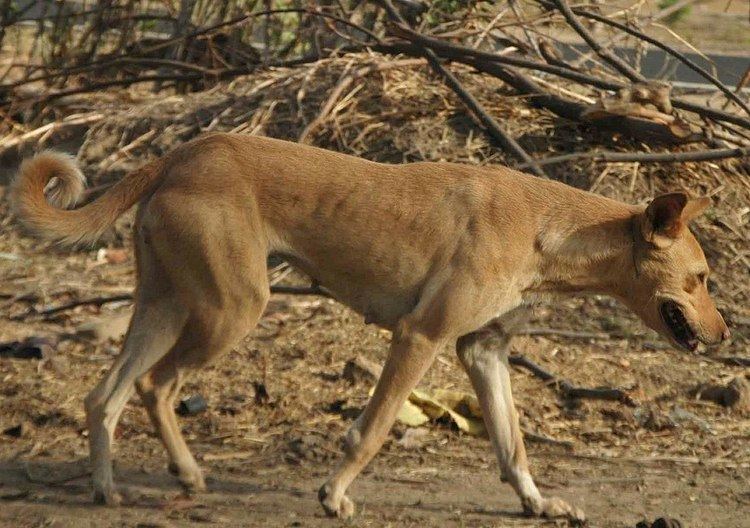 | ||
In ecology, the term pariah dog refers to free-ranging dogs that occupy an ecological niche based on waste from human settlements. When used in this manner, the term describes a large percentage of dogs worldwide, especially in developing countries, Eastern Europe and the Balkans.
Contents
While most pariah dogs are free-ranging, not all free-ranging dogs are genetically pariah dogs. Though they are "outcasts" in the social sense, and thus may still be called pariahs by observers who are not cynologists, feral dogs may be of any or mixed breeds. Individual dogs may be stray pets, descended from strays, or from litters abandoned by owners. They may live in packs, pairs, or singly.
All authentic strains of pariah dogs are at risk of losing their genetic uniqueness by interbreeding with purebred and mixed-breed strays. To prevent this from happening, some strains of pariah dogs are becoming formally recognized, registered, and pedigreed as breeds in order to preserve the pure type.
Breed groups in kennel clubs
The United Kennel Club (United States) recognizes purebred dogs bred for chasing large game in the Sighthound & Pariah Group. Included in this group are breeds that are either of early origin or modern reconstructions of early breeds or types. The group includes the Afghan Hound, Azawakh, Basenji, Borzoi, Canaan Dog, Carolina Dog, Chart Polski (Polish Greyhound), Cirneco dell'Etna, Greyhound, Hungarian Greyhound, Ibizan Hound, Irish Wolfhound, New Guinea Singing Dog, Pharaoh Hound, Portuguese Podengo, Rhodesian Ridgeback, Saluki, Scottish Deerhound, Sinhala Hound, Silken Windhound, Sloughi, Spanish Greyhound, Thai Ridgeback, Whippet, and Xoloitzcuintli.
In place of "pariah", which is derived from the Tamil word paraiyar and was first used in English in 1613 referring to a lower class within the traditional Indian caste system or "social outcasts", most registries other than United Kennel Club use the term "primitive". Primitive in the sense of "relating to an earliest or original stage or state" or "being little evolved from an early ancestral type" to refer to pariah-type dogs. The Fédération Cynologique Internationale, for example, places its pariah-type dogs within a breed group designated "Spitz and Primitive."
Carolina Dog
The Carolina Dog, found in the southeastern United States of America, is one example of a pariah-type feral dog. The Carolina Dog closely resembles feral dogs found in deserts of middle eastern countries. Both the desert dog (known as the Canaan Dog) and Carolina Dog are recognized as purebred by major registries.
Indian pariah dog
Indian pariah dogs are typically medium-sized and have yellow to rust-colored coats. Indian feral dogs are thought to be the ancestral stock of Australian Dingo. Although a 2004 Swedish study of mitochondrial DNA found that dingoes originated from southern China, not from India, more recent genetic research (2013) on aboriginal DNA seems to support the conclusion that sea-farers from India brought their dogs to Australia 4000 years ago and these constituted the ancestral population of the dingo.
